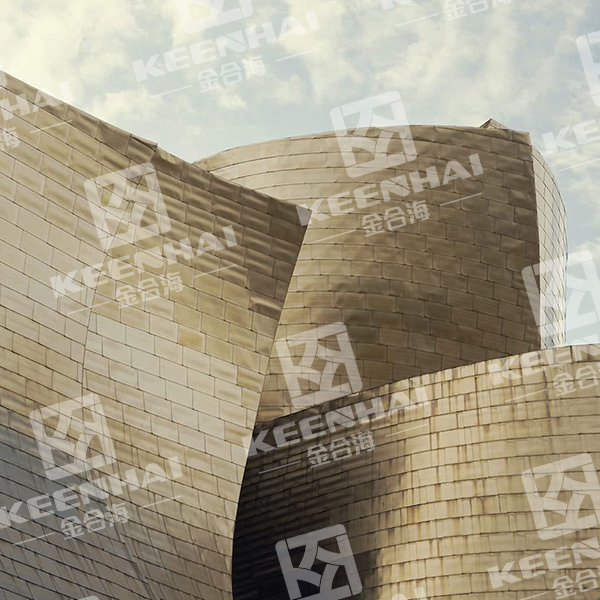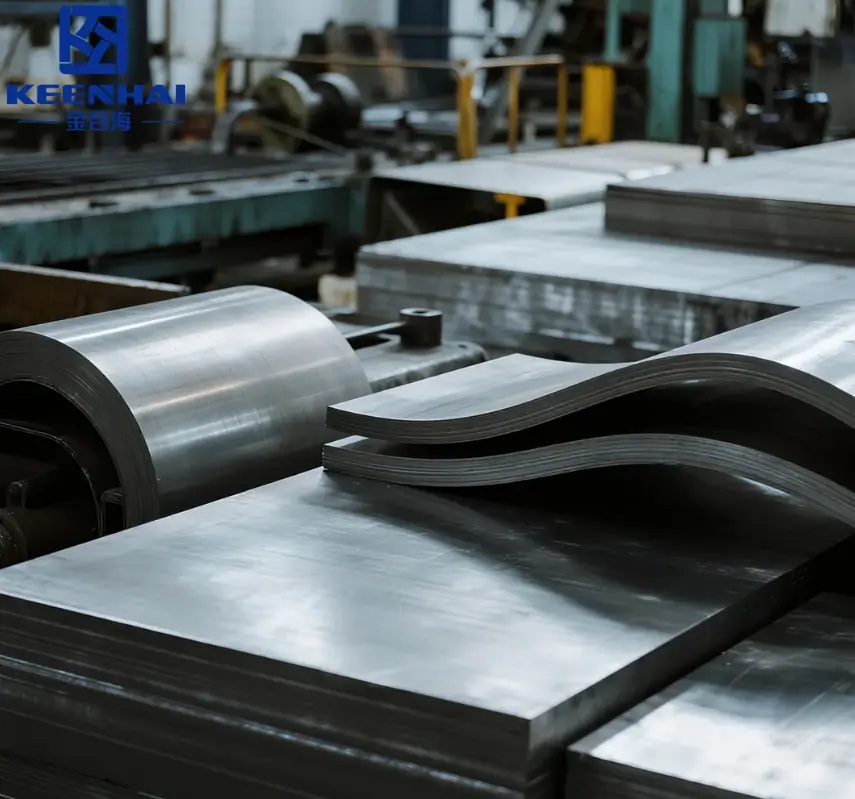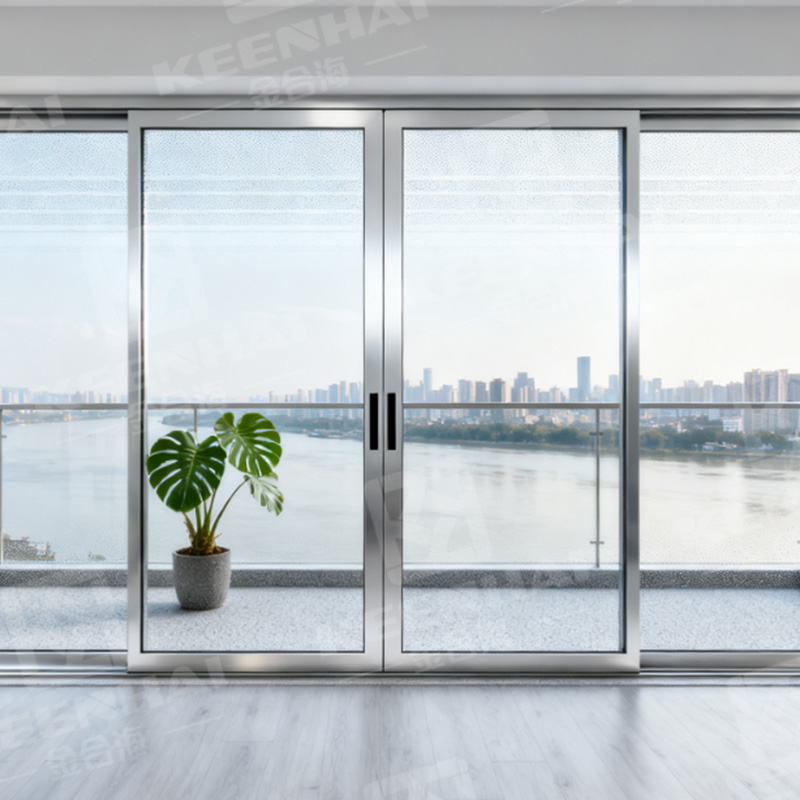When it comes to strength, stainless steel outperforms aluminum with higher impact resistance and long-term stability. Aluminum offers design flexibility, allowing intricate shapes and colorful finishes. For projects facing harsh weather or heavy use, stainless steel panels often prove more cost-effective over time despite a higher initial investment.
1.Material Overview
1.2Stainless Steel Composition and Properties
Stainless steel is a high-performance alloy composed primarily of iron, chromium (usually 10–30%), and small amounts of nickel and molybdenum. This composition gives it exceptional corrosion resistance, high strength, and low maintenance requirements, making it a top choice for modern façades. When architects and builders look for durable exterior solutions, stainless steel exterior wall systems often come up because they resist weathering, UV exposure, and even salty coastal air.
Key properties include:
-
Corrosion and rust resistance – critical for long-term façade performance.
-
High tensile strength – supports large panels without warping.
-
Aesthetic versatility – finishes range from mirror-polished to brushed textures, providing a sleek modern look.
1.3Aluminum Composition and Properties
Aluminum is a lightweight metal, often alloyed with elements such as magnesium, silicon, or copper to improve strength and durability. Its low density makes it easy to handle and install, particularly for large-scale panels. Aluminum naturally forms a protective oxide layer, giving it some corrosion resistance, but it doesn’t match the long-term durability of stainless steel, especially in harsh environmental conditions.
Other notable properties:
-
Lightweight, which reduces structural load on building frames.
-
Good thermal conductivity, sometimes useful in energy-efficient designs.
-
Flexibility for custom shapes, making it suitable for intricate façade designs.
1.4Common Uses for Each Material
Both stainless steel and aluminum are widely used for exterior wall cladding, but each has its ideal applications:
| Material | Ideal Applications | Advantages | Limitations |
|---|---|---|---|
| Stainless Steel | Commercial towers, modern residential façades, coastal buildings | Extremely durable, low maintenance, corrosion-resistant | Heavier, higher material cost |
| Aluminum | Retail façades, lightweight structures, intricate designs | Lightweight, flexible, easy to install | Less durable long-term, may require coating or treatment for corrosion resistance |
Stainless steel panels are often chosen for premium architectural projects, such as high-rise commercial buildings or contemporary residential complexes, where longevity and minimal upkeep are essential. In contrast, aluminum is preferred for projects emphasizing lightweight construction or flexible designs. For example, urban shopping centers often use aluminum panels for elaborate shapes, while beachfront towers rely on stainless steel to withstand humidity and salt exposure.
In certain scenarios, combining stainless steel metal cladding facades with aluminum accents can offer both structural durability and visual flexibility, giving architects more freedom in creative façade design.

2. Strength & Durability
2.1 Corrosion Resistance
Stainless steel exterior walls excel at resisting corrosion due to their high chromium content, which forms a protective oxide layer on the surface. This makes them ideal for buildings in coastal or humid regions, where salt and moisture exposure can quickly degrade less durable metals.
Aluminum also resists corrosion naturally but is less robust under prolonged exposure to harsh weather, and may require anodizing or powder coating to maintain appearance and protection.
For coastal high-rise façades, architects often prefer stainless steel metal cladding facades because it maintains both aesthetic appeal and structural integrity over decades.
2.2 Impact and Structural Strength
2.2.1 Stainless Steel:
Stainless steel panels are highly impact-resistant, capable of withstanding accidental knocks, wind-borne debris, and minor building vibrations without denting or bending. Its high tensile strength also allows for larger panel sizes with fewer support points, simplifying installation.
2.2.2 Aluminum:
Aluminum is lightweight and flexible, which makes it easier to shape and install. However, it bends more easily under force, so larger panels often require additional reinforcement.
| Material | Impact Resistance | Panel Size Flexibility | Structural Notes |
|---|---|---|---|
| Stainless Steel | Very High | Large panels, fewer supports | Minimal deformation, maintains alignment |
| Aluminum | Moderate | Flexible but may need extra framing | Can dent under heavy impact, may require coating |
Example: In modern office towers, stainless steel panels protect façades from both accidental impacts and wind loads, while aluminum is often reserved for decorative sections or canopies where weight savings are critical.
2.3 Longevity in Different Climates
Stainless steel façades thrive in nearly any climate — hot, cold, humid, or coastal. Its corrosion resistance, combined with UV stability and minimal maintenance needs, ensures it can last 50 years or more without significant degradation.
Aluminum performs well in mild climates but may oxidize or discolor faster under extreme sun or salt-laden environments. Its thermal expansion is also higher than stainless steel, which requires careful planning for panel gaps to prevent warping.
Pairing stainless steel panels with high-quality sealants and corner trims improves performance in high-rainfall or coastal cities, maintaining the façade’s look and safety over decades. For large commercial projects, choosing stainless steel building exterior panels ensures consistent durability and minimal upkeep.

3. Cost Comparison
3.1 Initial Material Cost
Stainless steel exterior walls have a higher upfront material cost compared to aluminum due to alloy composition and manufacturing complexity. However, this investment often pays off in long-term durability and minimal maintenance. Stainless steel is ideal for premium façades, commercial towers, and coastal buildings where longevity matters.
Aluminum is more budget-friendly initially, making it suitable for projects that prioritize lower material costs or lightweight construction.
| Material | Typical Material Cost per m² | Notes |
|---|---|---|
| Stainless Steel | $80–$150 | Higher grade alloys increase corrosion resistance and finish quality |
| Aluminum | $40–$90 | Lightweight and flexible, but may require coating for durability |
3.2 Installation Expenses
-
Stainless Steel: Requires careful handling due to weight and rigidity. Installation crews often need specialized tools and fasteners, but fewer panels are needed per façade area because of larger panel sizes.
-
Aluminum: Lightweight panels are easier to transport and install, reducing labor costs. However, smaller panels and extra support framing may be required for large spans, slightly increasing time and effort.
For high-rise or large commercial façades, the labor cost difference often balances out because stainless steel panels cover more area per piece, minimizing joint work.
3.3 Long-Term Maintenance Costs
Stainless steel excels in low-maintenance performance. Occasional cleaning is typically enough to maintain appearance and prevent corrosion, making it cost-effective over decades. Choosing high-quality stainless steel exterior wall panels ensures minimal repainting or repairs.
Aluminum may require periodic coating or touch-ups to prevent oxidation and maintain visual appeal, adding to long-term maintenance costs.
Example: Coastal hotels and luxury apartments often opt for stainless steel façades because the upfront material and installation cost is offset by decades of minimal upkeep and consistent aesthetics. For less exposed or decorative applications, aluminum remains a practical choice.

4. Aesthetic Differences
4.1 Surface Finishes and Color Options
Stainless steel exterior wall panels offer a wide range of surface finishes, from mirror-polished and brushed textures to matte and patterned coatings. These options allow architects to create sleek modern façades or subtle, understated building exteriors. Stainless steel naturally maintains its luster over time, resisting fading or discoloration.
Aluminum panels can be painted or anodized to achieve different colors, but they may require periodic touch-ups to retain vibrancy, especially under strong sunlight or in coastal climates.
Practical tip: Using stainless steel metal cladding facades for key sections of a building ensures both premium aesthetics and long-lasting color integrity.
4.2 Design Flexibility
-
Stainless Steel: Its rigidity allows for large, continuous panels with minimal joints, producing a smooth, uninterrupted façade. While heavier, these panels can be bent or embossed for unique textures or architectural details, making them versatile for contemporary designs.
-
Aluminum: Lightweight and easy to cut, aluminum enables intricate shapes, curves, and decorative patterns that might be difficult or costly with stainless steel. Designers often use aluminum for accent panels or canopies, while stainless steel forms the main structural cladding.
Example: In urban commercial buildings, a combination of stainless steel and aluminum panels is sometimes used — stainless steel for the main façade for durability and sleekness, aluminum for decorative inserts or shading structures.
4.3 Visual Impact on Building Façades
Stainless steel façades create a modern, high-end look that signals durability and quality. Its reflective surfaces can enhance natural light and visually enlarge a building, while brushed or textured finishes soften reflections for a more understated elegance.
Aluminum provides a lighter appearance and can be colored to match branding or design themes, but may fade over time if not properly coated.
For projects looking for premium performance and aesthetics, pairing the main façade with stainless steel building exterior panels ensures long-lasting visual appeal.
If you’re exploring a full range of stainless steel products for exterior design, including panels, fasteners, and finish options, you can check out the comprehensive selection at PVD Stainless Steel Products. This helps designers and builders source high-quality materials for both durability and style.







